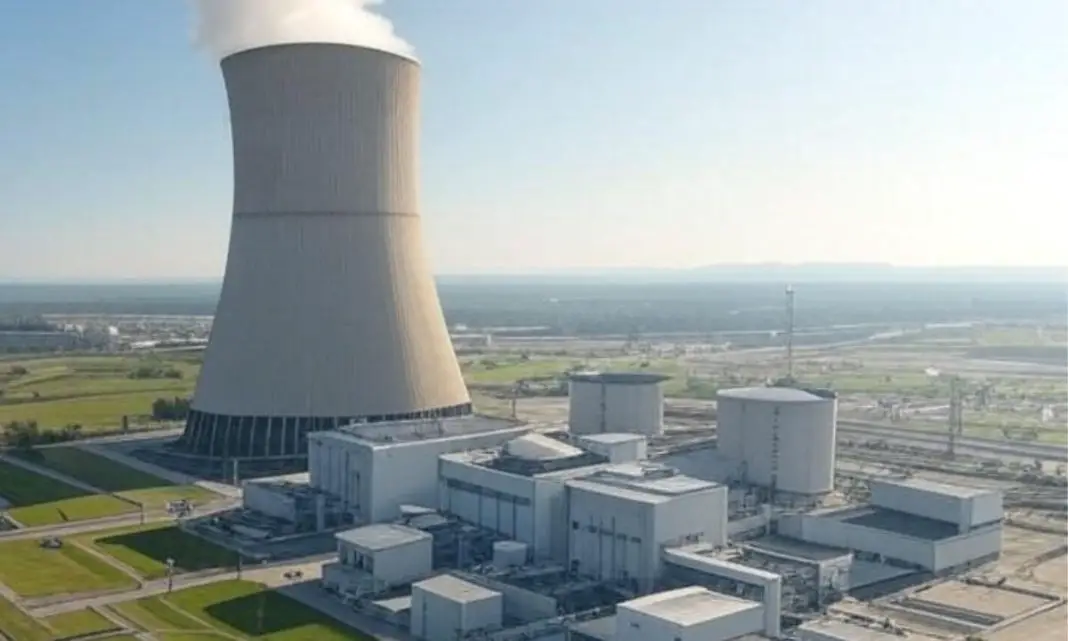It’s been a hot summer in America. That’s created major energy shortages. Shortages that Donald Trump and his administration saw coming a mile away when he took office once more back in January. It didn’t get all the attention, but the new Trump regime immediately got to work on unleashing American energy dominance for the entire world to see. Not just because they could, but because it was necessary.
The Palisades nuclear power plant in Michigan is slated to resume operations in October, marking a historic milestone as the first U.S. nuclear facility to restart after closure. This development comes as the nation’s electrical grid faces mounting pressure from surging power demands, driven by expanding technological needs and aging infrastructure.
Originally shuttered in May 2022, the Holtec International-owned plant is poised to return online with the support of a $1.5 billion loan guarantee secured under the Biden administration in September 2024. The incoming Trump administration has opted to maintain funding for this project. The decision highlights a rare point of bipartisan alignment on the need to bolster reliable energy sources to meet growing consumption.
Republican Rep. Bill Huizenga, whose district includes the Palisades plant, emphasized the project’s practicality. “You’ve got two administrations with contrasting energy approaches agreeing on the value of restarting Palisades,” he noted. The facility’s existing infrastructure eliminates the need for lengthy permitting processes, distinguishing it from new construction projects. Having operated for over five decades, the plant is well-positioned for a swift revival.
Once operational, Palisades is expected to supply electricity to approximately 800,000 homes. Additionally, the site will incorporate small modular reactors (SMRs), which could provide power for another 300,000 households. These advanced reactors represent a growing trend in nuclear technology, offering scalability and efficiency compared to traditional large-scale reactors.
The reactivation of Palisades comes at a critical time, as energy experts warn of potential blackouts across the U.S. within the next few years, including in Michigan. A recent Department of Energy report, alongside analyses from Always on Energy Research, points to strained grid capacity due to aging infrastructure and the closure of coal plants under stringent regulations. The rapid expansion of data centers, which consume vast amounts of electricity, further exacerbates the challenge.
Nuclear power faces significant hurdles, including rigorous regulations, lengthy permitting processes, and opposition from environmental groups citing radiation risks. These barriers have historically slowed the development of new nuclear facilities, making the Palisades reopening a notable achievement in addressing energy shortages.
On his first day in office, President Donald Trump declared a national energy emergency, signaling a robust commitment to revitalizing domestic energy production. His administration has prioritized nuclear energy, issuing executive orders to streamline its deployment and reduce regulatory obstacles, a move that most energy scientists and physicists believe is incredibly wise at this moment.
Trump Administration’s Energy Policy Of Deregulation and Dominance
The Trump administration’s energy strategy centers on deregulation and maximizing the use of all available energy sources to restore U.S. energy dominance. This approach marks a significant shift from previous policies, emphasizing rapid expansion of domestic production across nuclear, oil, gas, coal, and renewable sectors to meet rising demand and strengthen economic competitiveness.
One cornerstone of Trump’s energy agenda is the reduction of regulatory burdens that have long delayed energy projects. By streamlining permitting processes for pipelines, drilling operations, and power plants, the administration aims to accelerate infrastructure development. This includes revising environmental regulations that have slowed the construction of new facilities, particularly in the fossil fuel and nuclear sectors.
Nuclear energy has emerged as a key focus, with Trump signing executive orders to expedite the deployment of advanced reactors, such as SMRs. These orders aim to cut through bureaucratic red tape, enabling faster licensing and construction. The Palisades project exemplifies this strategy, leveraging existing infrastructure to bypass the lengthy approvals required for new sites.
The administration has also prioritized revitalizing the oil and gas industries. By expanding drilling on federal lands and offshore sites, Trump seeks to boost domestic production and reduce reliance on foreign energy. The reversal of restrictions on hydraulic fracturing and methane emissions regulations is intended to unleash the full potential of U.S. shale resources, which have transformed the global energy market in recent years.
Coal, once a declining sector due to environmental regulations, is also seeing renewed support. The Trump administration has moved to roll back rules like the Clean Power Plan, which imposed strict emissions limits on coal plants. This shift aims to preserve jobs in coal-producing regions and maintain a diverse energy mix to ensure grid reliability.
Renewable energy, while not the primary focus, remains part of the administration’s “all-of-the-above” strategy. Investments in wind and solar projects continue, particularly where they complement other energy sources. However, the administration has emphasized that renewables must compete without heavy subsidies, prioritizing market-driven solutions over government mandates.
The push for energy dominance extends to international markets, with Trump advocating for increased exports of liquefied natural gas (LNG) and crude oil. By expanding export terminals and forging trade agreements, the administration aims to position the U.S. as a leading global energy supplier, enhancing geopolitical influence and economic growth.
Critics argue that deregulation could compromise environmental protections, potentially increasing emissions and ecological risks. Supporters, however, contend that a robust energy sector is essential for national security and economic stability, particularly as global demand rises.
What do you think about the Trump administration’s “all-of-the-above” energy approach and emphasis on nuclear energy? Let us know in the comments section below!


I am with the President!
I agree using all the abilities and limiting what we export so we have enough to keep ourselves secure is an excellent move while still looking at and advancing with other options like wind or solar, etc.
I agree with President Trump.